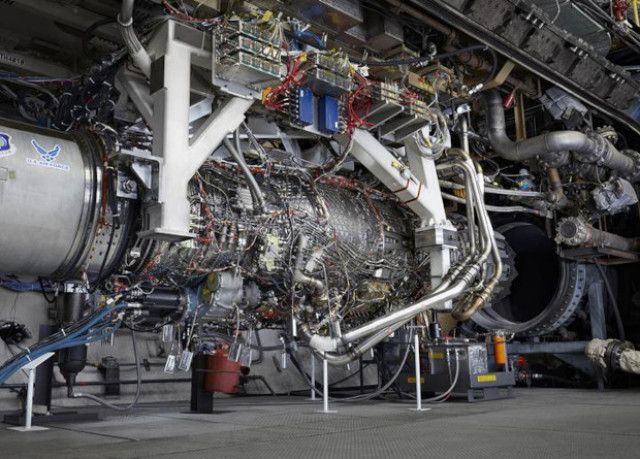The American company GE Aviation has completed testing of the first prototype of the promising XA100 adaptive aircraft jet engine, which has been under development since 2007 by order of the US Air Force. According to Flightglobal, bench tests of the power plant have been conducted since December 2020. During the tests, the power plant demonstrated characteristics that correspond to the mathematical forecasts obtained at the design stage.
Unlike modern turbojet engines installed on some combat aircraft, the XA100 adaptive engine received three circuits: an internal one consisting of a gas generator and a nozzle part, and two external ones.
When flying at subsonic speed, the third air circuit will be open, and the engine will operate almost like a turbofan power plant with a large degree of dual-circuit. In this mode, the power plant will have a slightly higher thrust and significantly lower fuel consumption. When flying at supersonic speed, the third circuit will close completely, and the volume of air passing through the second circuit will decrease slightly.
The XA100 uses ceramic matrix composites, polymer matrix composites, and parts manufactured using additive technologies.
The adaptive engine is primarily planned to be used on the F-35 Lightning II fighter. Replacing the standard F135 powerplant with the XA100 is expected to increase the F-35's flight duration by 50 percent, range by 35 percent, and thrust by 10 percent. At the same time, fuel consumption in flight will be reduced by 25 percent.
Details about the bench tests of the power plant GE Aviation does not disclose. The company is currently assembling a second prototype of the engine, which will begin testing towards the end of 2021.
In addition to GE Aviation, the American company Pratt & Whitney is developing an adaptive engine. Its powerplant was designated XA101 . The first samples of the XA100 and XA101 engines will be able to develop thrust up to 200 kilonewtons. For comparison, the maximum thrust of the F135 engine of the F-35 fighter is 125 kilonewtons and 191 kilonewtons in afterburner mode.
Vasily Sychev

